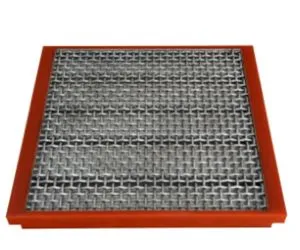Stainless steel screen plates, while widely used and appreciated for their durability and corrosion resistance, also come with certain disadvantages. Here are some of the key drawbacks associated with stainless steel screen plates:
High Cost:
Stainless steel is generally more expensive than other materials commonly used for screen plates, such as carbon steel or polyurethane. The higher cost of stainless steel screen plates may pose a significant investment barrier, particularly for budget-conscious buyers or applications with large screening areas.
Limited Corrosion Resistance in Certain Environments:
While stainless steel is known for its corrosion resistance, it is not immune to corrosion in all environments. In highly corrosive environments, such as those containing chloride ions or acidic solutions, stainless steel screen plates may still corrode over time, leading to premature failure and replacement.
Susceptibility to Pitting and Crevice Corrosion:
Stainless steel screen plates, particularly those of certain grades, may be susceptible to localized corrosion phenomena such as pitting and crevice corrosion. These forms of corrosion can occur in specific conditions, such as exposure to chloride-containing solutions or stagnant areas where debris accumulates, leading to localized damage and weakening of the screen plates.
Potential for Surface Contamination:
Stainless steel screen plates can sometimes experience surface contamination, such as rust or discoloration, due to exposure to harsh chemicals, improper cleaning methods, or the presence of foreign particles. This contamination may compromise product quality in industries where strict hygiene standards are required, such as food processing or pharmaceutical manufacturing.
Limited Wear Resistance:
While stainless steel is relatively durable, it may not offer the same level of wear resistance as some alternative materials, such as hardened steel or polyurethane. In applications involving abrasive materials or high-wear conditions, stainless steel screen plates may experience accelerated wear and require more frequent replacement, leading to increased maintenance costs and downtime.
Potential for Galvanic Corrosion in Mixed Metal Systems:
In applications where stainless steel screen plates are used in conjunction with other metals or alloys, such as aluminum or carbon steel, there is a risk of galvanic corrosion. This occurs when two dissimilar metals come into contact in the presence of an electrolyte, leading to accelerated corrosion of the less noble metal (e.g., aluminum or carbon steel) in the system.
Difficulty in Forming Complex Shapes:
Stainless steel screen plates may be challenging to form into complex shapes or configurations, particularly with fine mesh sizes or intricate patterns. This limitation can restrict their applicability in certain screening applications that require custom-designed screens to achieve optimal performance.
Overall, while stainless steel screen plates offer excellent durability and corrosion resistance, it’s essential to consider their limitations and potential drawbacks when selecting screen plate materials for specific applications. Depending on the operating conditions, material characteristics, and budget constraints, alternative screen plate materials may offer more suitable solutions.






